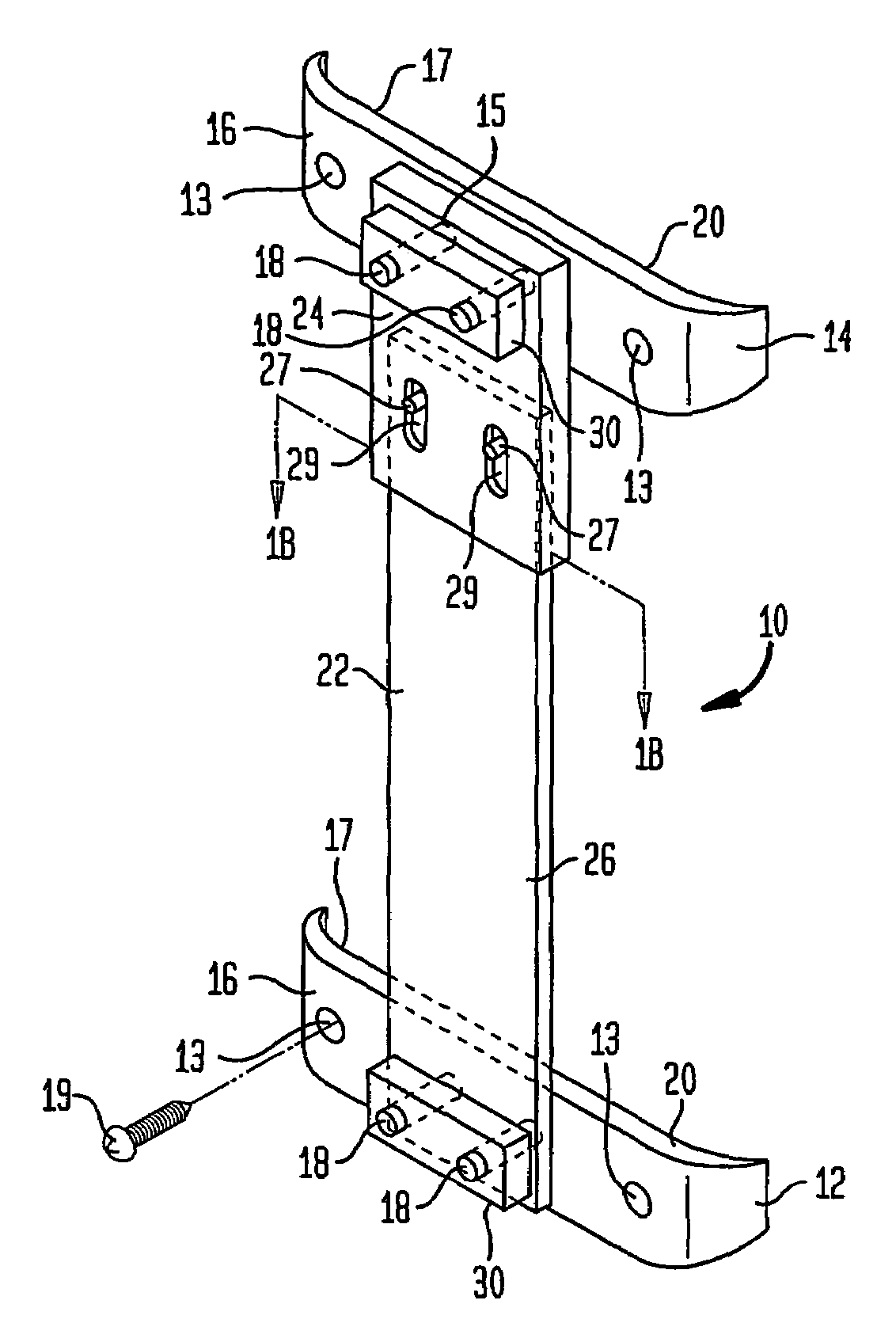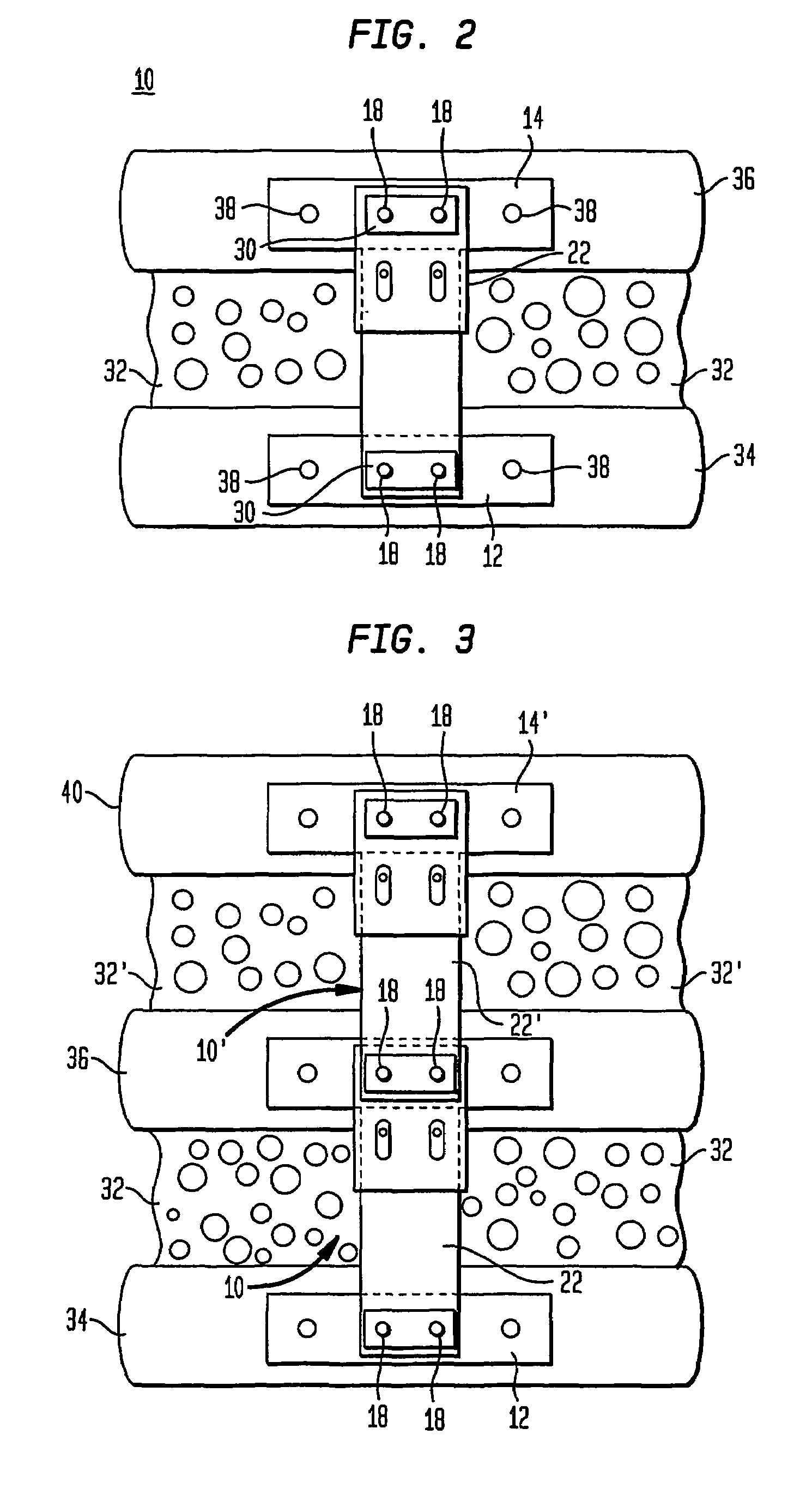Mobile sleeve structure for maintaining spatial relationship between vertebrae
a mobile sleeve and spatial relationship technology, applied in the field of spinal implant systems, can solve the problems of not being able to maintain the desired spatial relationship, prone to misplacement, and not being able to accommodate the natural lordotic curvature of an individual patient's spinal column, so as to prevent the damage to the template, the adjustable sleeve, or the vertebra
- Summary
- Abstract
- Description
- Claims
- Application Information
AI Technical Summary
Benefits of technology
Problems solved by technology
Method used
Image
Examples
Embodiment Construction
[0040]FIG. 1a is an isometric representation of the mobile sleeve 10 that is provided with a series of components that when assembled together cause mobile sleeve 10 to have a shape generally in the form of an uppercase letter “I.” A lowermost template 12 and an uppermost template 14 each have an anterior side 16, a posterior side 17 (not shown in this figure), and an outer edge 20 that extends around the perimeter between posterior side 17 and anterior side 16. A respective pair of posts 18 extend orthogonally outward from each of the anterior sides of the lowermost and uppermost templates. Two posts 18 are located on each anterior side 16 of lowermost template 12 and uppermost template 14. Posts 18 are used to connect lowermost template 12 and uppermost template together and, as will be described hereinafter, to facilitate incorporation of additional levels to the overall structure whereby more than two vertebra are to be fused. Lowermost template 12 and uppermost template 14 each...
PUM
 Login to View More
Login to View More Abstract
Description
Claims
Application Information
 Login to View More
Login to View More - R&D
- Intellectual Property
- Life Sciences
- Materials
- Tech Scout
- Unparalleled Data Quality
- Higher Quality Content
- 60% Fewer Hallucinations
Browse by: Latest US Patents, China's latest patents, Technical Efficacy Thesaurus, Application Domain, Technology Topic, Popular Technical Reports.
© 2025 PatSnap. All rights reserved.Legal|Privacy policy|Modern Slavery Act Transparency Statement|Sitemap|About US| Contact US: help@patsnap.com



